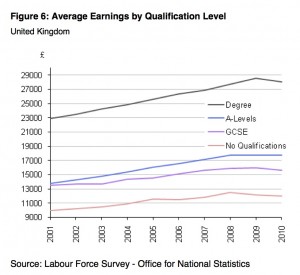Times being what they are, there was something enticing about a book titled [amazon_link id=”0674055748″ target=”_blank” ]The Crisis of Capitalist Democracy[/amazon_link]. By Richard Posner, no less, co-host of the always thought-provoking and often illuminating Becker-Posner blog. I should have been alerted by the praise on the back cover – “not exactly beach reading”, “notable for its high seriousness” – to the fact that this probably was not a good choice for the start of mince pie season. So I’m not at all sure that I’ll do it justice here.
The book, published in 2010, offers an analytical overview of the causes of the Great Financial Crisis and the subsequent depression, and traces some of the likely political consequences. The first section, the analytical narrative of events from 2001 to 2009, is extremely dense, and I speak as one who revels in reading economics papers. To put 250 pages in a nutshell, Posner pins much of the blame on Alan Greenspan and Ben Bernanke for creating the macroeconomic environment for asset price bubbles, essentially for ideological reasons in his view; and then on Hank Paulson and the US Treasury for their inconsistency in not bailing out Lehman Brothers in the autumn on 2008. (The book is entirely US-focussed.) Those mistakes having been made, it’s not clear what actions he thinks the authorities ought to have taken but didn’t, as the book rules out most possibilities including that chosen by the UK authorities, of direct government stakes in troubled banks, or the earlier Swedish option of separating troubled assets into a ‘bad bank’. Posner is particularly critical of President Obama for not having a plan when he assumed office despite the several months of transition. The message, Posner concludes, was that either the incoming Administration was as incompetent as its predecessor, or that nobody had any idea what to do.
Despite the mass of detail in this section, including 12 pages on the rescue of GM and Chrysler, it feels strikingly incomplete. There is no mention of the international dimensions of the financial crisis at all. While this book focuses on the American efforts to reform finance and the links between economic policy and US politics, this omission is surely a flaw. Still, the discussion in the second and third parts of the book does have universal interest.
Part two concerns the ideas we bring to understanding and resolving the crisis – the renewed lesson about the pervasiveness of true uncertainty, the revival of ‘Keynesian’ ideas (some more closely linked to Keynes’s writing than others), the fatally flawed model of efficient financial markets and the weaknesses of macroeconomics. He particularly cites Akerlof and Shiller on [amazon_link id=”069114592X” target=”_blank” ]Animal Spirits[/amazon_link]. Who could at this point in history disagree with Posner’s conclusion that macroeconomics needs to embrace both psychology and political science?
The third part, relatively brief, is the most interesting. Posner turns to the politics of economic and regulatory reform. He is not optimistic about the capacity of the US political system to achieve – well, anything, in fact. Again, hard to disagree (as a Robin Harding column about the current state of budget negotiations from today’s FT underlines). The legacy of the banking crisis – he agrees here with [amazon_link id=”0691142165″ target=”_blank” ]Reinhardt and Rogoff [/amazon_link]- is greater public debt. Posner describes US politics as “cumbersome, clotted, competence-challenged and even rather shady” (p387), able to respond to a true emergency (hmmmm, I think back to [amazon_link id=”0241950856″ target=”_blank” ]Hurricane Katrina [/amazon_link]and wonder) but not to continuing huge challenges. Populism won’t help, but populism we got. The inability to address the public debt and structural, growing deficits, is the crisis of American capitalist democracy.
[amazon_image id=”0674055748″ link=”true” target=”_blank” size=”medium” ]Crisis of Capitalist Democracy[/amazon_image]


